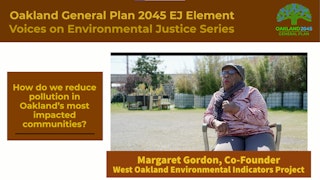Many of Oakland’s Black, Indigenous, People of Color (BIPOC) and low-income communities are disproportionately burdened by pollution and environmental stressors due to legacies of racialized zoning and policy-making.
In order to properly address this undue burden, the City is creating its first Environmental Justice (EJ) Element for the Oakland 2045 General Plan Update.
The Environmental Justice Element will serve as the keystone of the City’s environmental justice goals. This element will distinctly emphasize the importance of environmental justice in the General Plan.
In recognition of the connections between environmental justice topics and multiple elements of the General Plan, the City of Oakland will also integrate environmental justice into the policies, goals, and actions of all other elements.

